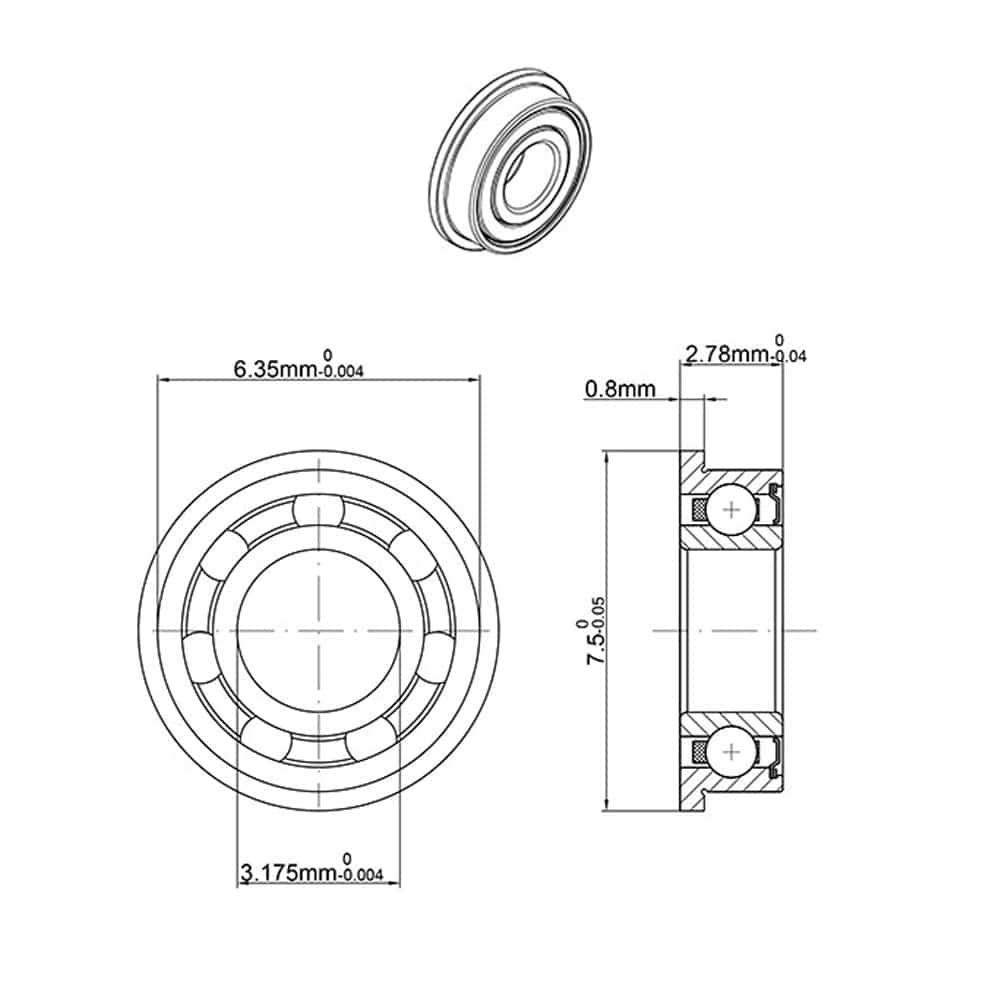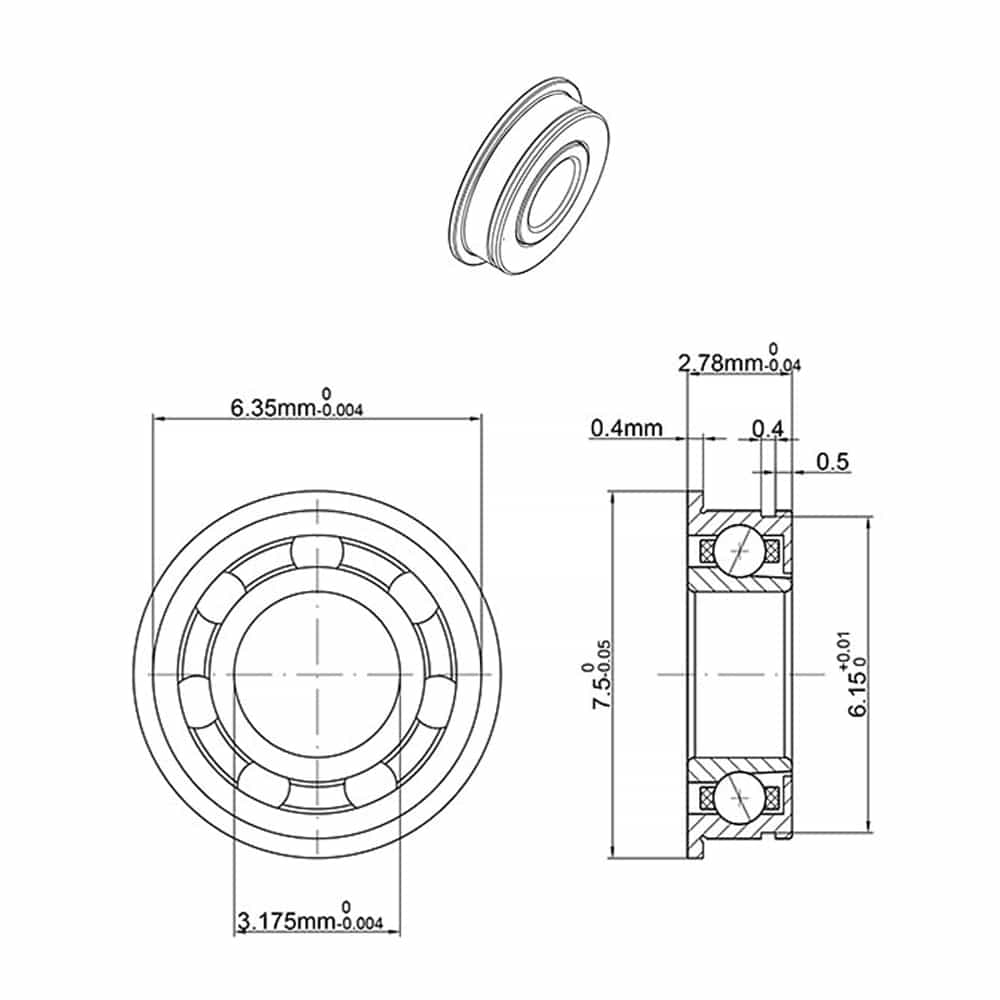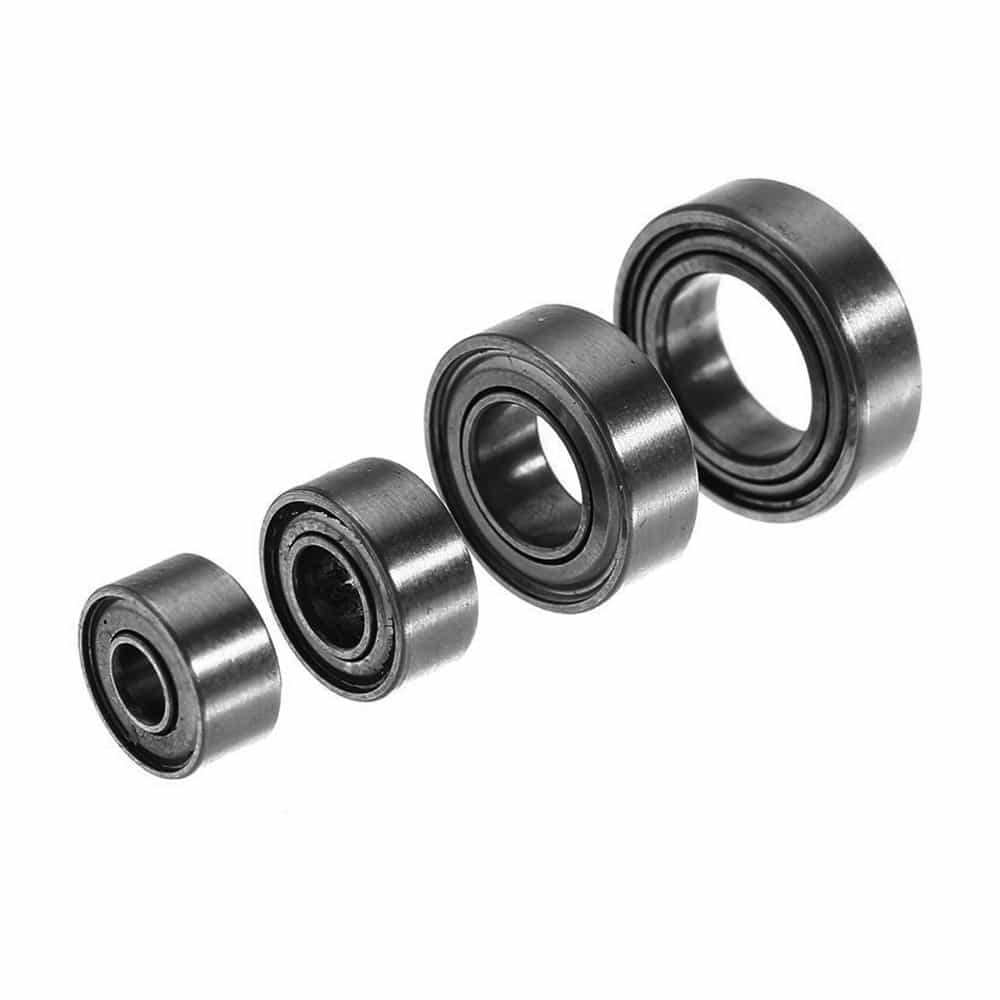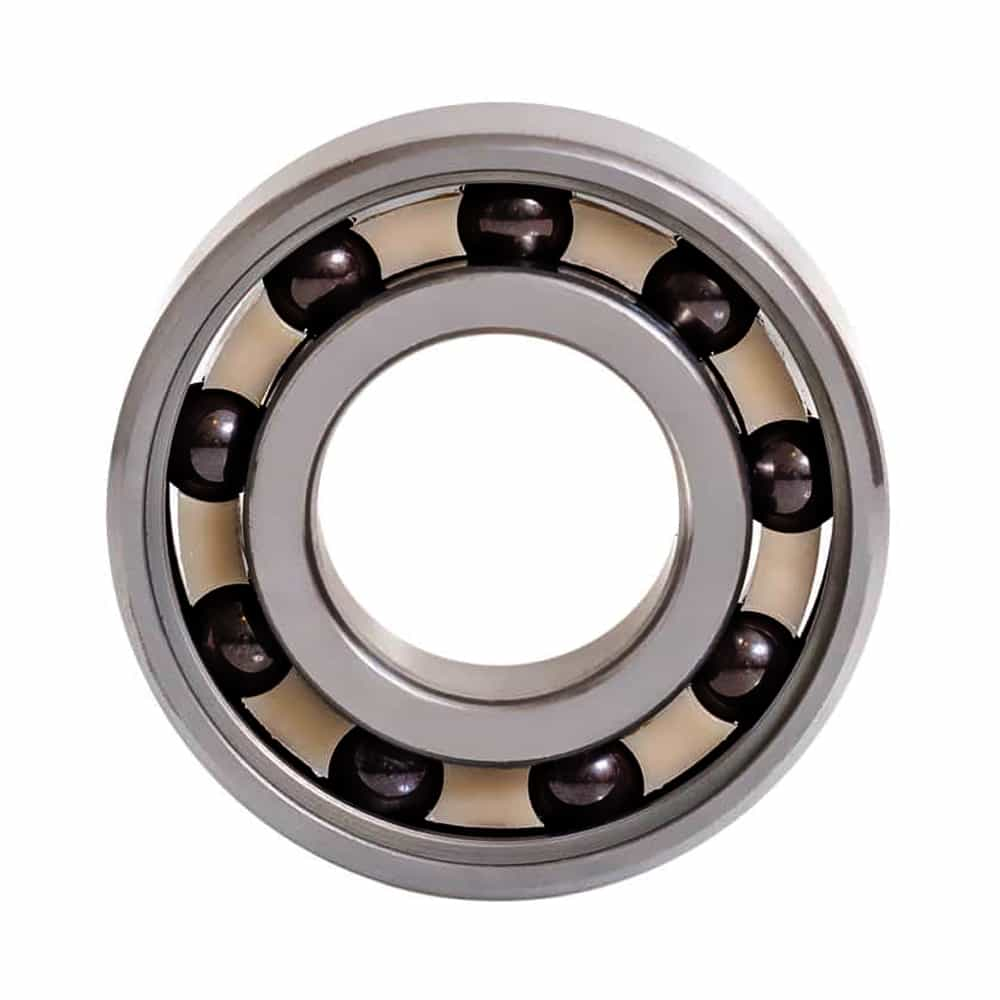A Guide on Dental Bearings
Dental bearings play a vital role in dental handpieces, affecting their performance and lifespan. For dental professionals, it's important to understand the different types of bearings, their materials, and how to maintain them. This guide covers all aspects of dental bearings, from the basics to advanced bearing technology. It can help you make informed choices for your practice.
Understanding Dental Bearings
Dental bearings are precision parts found in the head of dental handpieces. They enable the rotor to spin at extremely high speeds, often up to 400,000 rpm, with minimal friction. This smooth operation is crucial for precision and reliability during dental procedures. The design, quality, and material of these bearings greatly affect the handpiece's performance, noise level, and lifespan.
Types of Dental Bearings
Radial Ball Bearings
Radial ball bearings handle radial loads—forces that apply at a right angle to the shaft of the bearing. These bearings work well for dental tools that operate in deep grooves or need stability at various angles.
A typical radial ball bearing includes an inner ring and an outer ring. It also has a series of steel or ceramic balls, often held in place by a cage. Models like SR144TLZN and SFR144TLZWN are commonly used in such applications.

Structure of a Dental Bearing - SR144TLZN

Structure of a Dental Bearing - SFR144TLZWN
Angular Contact Ball Bearings
Angular contact ball bearings are designed to handle both radial and axial loads. Unlike standard radial bearings, these bearings can support significant axial loads due to the contact angle, which allows the load to transfer between the inner and outer rings. This makes them particularly suitable for high-speed dental applications where precision and durability are crucial. The SFR144K1TLGZ1WN is an example of an angular contact ball bearing designed for such purposes.

Structure of a Dental Bearing - SFR144K1TLGZ1WN
From the shape, we provide the following dental bearings:
Materials Used in Dental Bearings
The material of a dental bearing greatly affects its performance, durability, and maintenance. Each material has its own benefits, so it's important to choose the right one for your needs.
Steel Dental Bearings
Steel dental bearings are the traditional choice for many dental handpieces. These bearings are durable and cost-effective, making them a popular option.
However, they need regular lubrication and maintenance to prevent wear and tear. This is especially important at the high speeds and stress of dental procedures.
Steel ball bearings are also more prone to generating noise, which can be a consideration in patient comfort.

Ceramic Dental Bearings
Ceramic dental bearings are known for their superior performance in high-speed applications. These bearings are made from ceramic materials like silicon nitride. They are harder, lighter, and more wear-resistant than steel bearings. They operate more quietly and have a longer lifespan, making them ideal for high-speed dental handpieces. Additionally, ceramic bearings generate less heat and require less lubricant oil, which further extends their service life.
Hybrid Dental Bearings
Hybrid bearings use ceramic balls and stainless steel races, providing a good mix of durability and performance. They run smoothly and need less lubrication than steel bearings. These bearings reduce friction and centrifugal force, making them ideal for high-speed dental handpieces. The ceramic balls also help reduce wear and extend the life of the lubricant, which is why many dental professionals choose hybrid ceramic bearings.

Choosing the Right Dental Bearings
Choosing the right dental bearings is key to the performance and lifespan of your handpieces. Consider several factors to ensure your equipment performs well in daily use.
Handpiece Type
The type of handpiece you use—whether high-speed or low-speed—will largely determine the suitable bearing type. High-speed dental handpiece bearings must withstand greater centrifugal forces and generate less heat. This makes ceramic or hybrid bearings an excellent choice.
Performance Needs
High-speed handpieces need bearings that can handle high rpm with minimal noise and vibration. This improves both precision and patient comfort. Ceramic dental bearings are often preferred in these situations because of their superior performance.
Maintenance Preferences
Your maintenance routine will also influence your choice. If you prefer a low-maintenance option, lube-free or hybrid bearings might be ideal. However, if you’re comfortable with regular maintenance, lubricated steel bearings could be more cost-effective.
Cost vs. Longevity
Ceramic and hybrid bearings may have a higher initial cost. However, their longevity and reduced maintenance needs often make them more economical over time. Investing in high-quality bearings can extend the life of your dental handpieces. This reduces the frequency of repairs and replacements.
Maintenance of Dental Bearings
Proper maintenance is essential to extend the life of dental bearings and ensure the optimal performance of your handpieces. Neglecting maintenance can cause debris buildup, increased friction, and premature wear. These issues can compromise the efficiency of your tools and the safety of your patients.
Maintenance Techniques
Proper maintenance of dental bearings is essential to ensure their longevity and optimal performance. By following these practices, you can minimize wear and tear, reduce the risk of breakdowns, and extend the life of your handpieces.
- Lubrication: Regular lubrication is crucial for lubricated bearings. Applying the right type and amount of lubricant oil prevents friction and wear. Follow the manufacturer’s guidelines for the best results.
- Cleaning: Clean your dental bearings before sterilization to remove any debris or organic material. This step helps prevent corrosion and maintains performance. Use appropriate cleaning solutions and techniques to avoid damaging the bearings or handpiece.
- Inspection and Replacement: Regularly inspect your dental bearings for signs of wear, such as increased noise, vibration, or reduced performance. Replacing worn bearings in a timely manner is crucial for maintaining efficiency and safety.
Advances in Maintenance-Free Bearings
Lube-free bearings are a significant advancement in bearing technology. They offer dental professionals a low-maintenance option. These bearings are designed to work effectively without regular lubrication. This makes them ideal for busy practices that want to reduce maintenance time and costs.
The Impact of Bearings on Dental Handpiece Performance
The performance of dental handpieces is heavily influenced by the quality of the bearings they use. High-quality bearings not only enhance the functionality of the handpieces but also contribute to better patient care and overall practice efficiency.
Performance Indicators
The quality of dental bearings directly affects the smoothness of operation, noise levels, and vibration of dental handpieces. High-quality bearings, especially ceramic and hybrid types, are known for their quiet operation and low vibration. These features enhance both the precision of your work and the comfort of your patients, making them a preferred choice in modern dentistry.
Common Issues and Solutions
Despite their importance, dental bearings can face problems such as imbalance due to debris buildup, excessive wear from inadequate lubrication, and overheating during use. Regular maintenance, including proper lubrication and timely replacement, is essential to prevent these issues and ensure long-term performance.
Advances in Bearing Technology
Dental bearing technology is constantly advancing. Innovations focus on making bearings more efficient, quieter, and durable. Modern bearings use advanced materials and techniques, resulting in smoother surfaces, reduced friction, and a longer lifespan.
Case Studies and Practical Examples
Consider the experience of a dental practice that switched from steel to hybrid bearings in their high-speed handpieces. They observed a significant reduction in noise and vibration, leading to improved patient comfort and more precise procedures. The extended life of the hybrid bearings also resulted in fewer repairs and replacements, ultimately reducing their overall costs.
These examples show that investing in high-quality bearings and proper maintenance greatly improves the performance of dental handpieces. It also boosts the overall efficiency of a dental practice. Regular maintenance and staying updated on the latest bearing technologies are essential for getting the most out of your dental equipment.
Conclusion
Dental bearings are essential for the performance and durability of dental handpieces. Understanding the types, materials, and maintenance of bearings is crucial for optimizing your practice. By choosing the right bearings and maintaining them properly, you can improve efficiency, enhance patient outcomes, and reduce long-term costs.
Keep Learning








